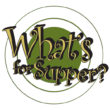Like most cooks, I suppose, I have a good memory for meals. Today, I remember a salad. This was over 20 years ago on my first trip to Europe. My company, bless their generous hearts, sent me to a sales meeting outside Amsterdam. After a brief performance at the meeting, my wife and I drove down to Brussels and to la Grand-Place, the old square in the center of town. It was February, cold, snowing lightly and the plaza was beautiful in the late afternoon. We drank a Trappist beer (maybe a Chimay) in a warm pub, explored a bit, found a cheap hotel and started looking for a restaurant. We found one on the Petite rue de Bouchers just off the Grand-Place.
I was primarily interested in a fish stew and the salad was incidental, or so I thought, to the main course. Only this one was special. It was an extremely fresh mix of very tiny leaves of greens topped with gorgeous white pink sliced figs and a sweet, delicious and complex blue cheese. The chef had prepared an amazingly light vinaigrette that did the subtle work of improving and setting off the sweet of the figs and cheese, lifting the flavors of the greens while never really existing as a separate taste. You didn’t taste it – you tasted the result. It was absolutely stunning.
The photo, by the way, is an approximation. I didn’t have my camera for the real salad.
The rest of the meal? I don’t remember. The fish stew, the wine, a dessert, I don’t know. But the salad. Perfection, a peak moment and a wonderful memory.




